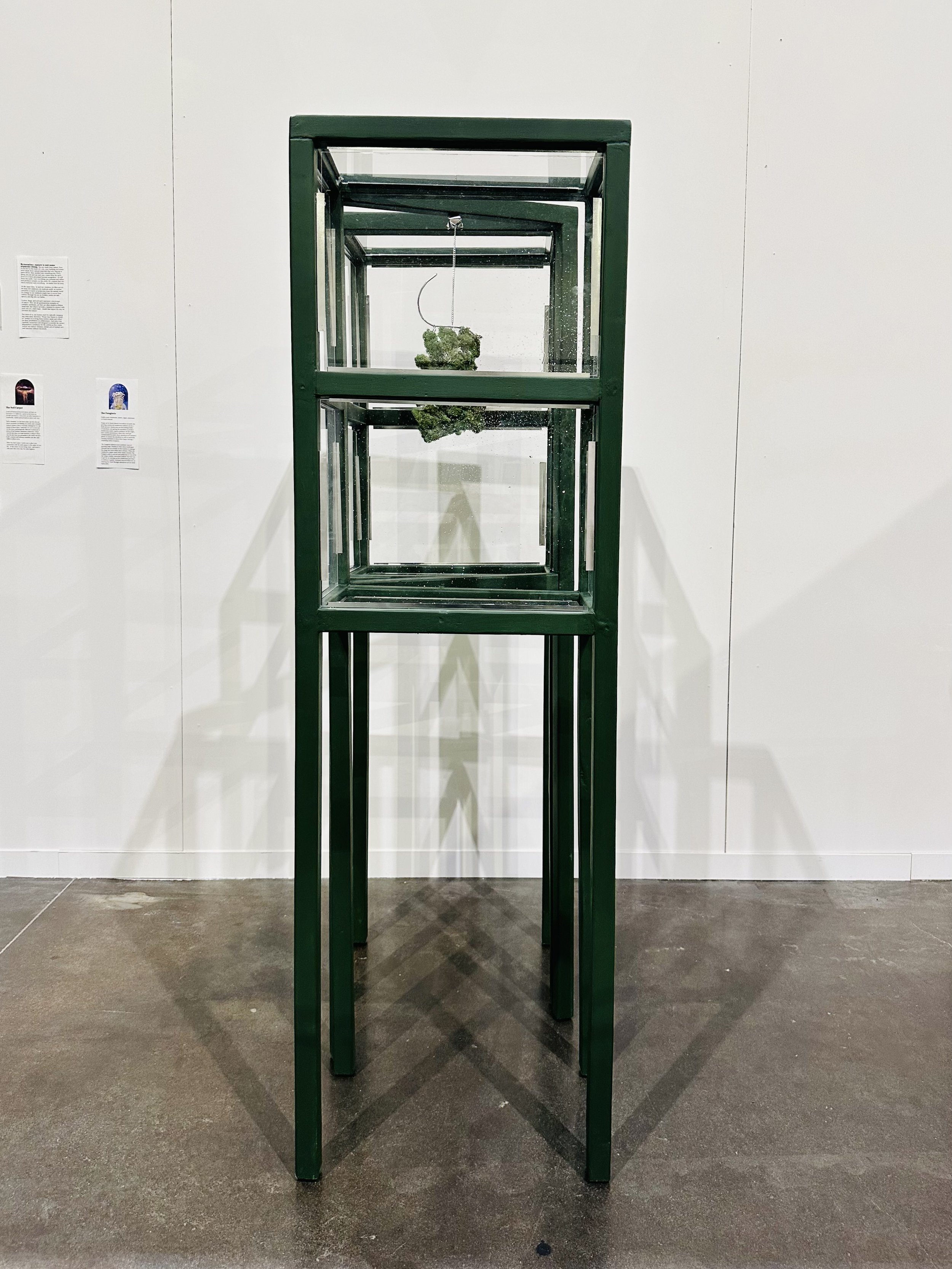
From One Nature to Another
RISD Master’s Thesis - Industrial Design
The Master’s Thesis at the Rhode Island School of Design is comprised of one year of research and making, a thesis book, and a final exhibition.
The Exhibition
Remember: nature is not some separate thing.
You are made from nature. Even if you live in the heart of a city, your building and streets were made from natural materials that were dug up or sawn down, then molded into something else. Everything you eat and use and wear comes from the earth. Even if it’s been processed beyond recognition - it’s still from the earth. And everything you consume and utilize and produce remains on this earth. It’s a system that connects everyone and everything - no matter how far away.
At the same time, we seal our windows, we filter our air, we keep dirt outdoors, we eradicate mold, we enclose ourselves in layers of protection from the outside world. So change in our midnsets might have to occur from within; through the air we breathe, inside our safe spaces, and dig into our habits.
Lichen, fungi, and soil each represent a microcosm of nature. They are all quintessential examples of complex symbiosis, yet they are often treated as lifeless materials. But what if we took a moment to connect with each one on a daily basis - would that impact the way we envision the future?
For most of us, our homes won’t be radically changing any time soon; therefore, From One Nature to Another invites us to bring these entities inside and reflect on their possibilities as collaborators. Each piece was carefully researched and designed to provide the correct atmospheric conditions for the entities as they reside within our indoor climate, initiate acts of mutual care, and function without electricity.
The Pieces
The Soil Carpet
Soil is essential. It is the land under our feet, the substance necessary for feeding our world, and a valuable natural resource that is currently endangered. It is the easiest of these three “materials” to access and the most psychologically difficult to surmount in terms of full-bodied, emotional connection. When was the last time you went barefoot in nature? When was the last time you grounded in the earth? We have built a mental wall between ourselves and dirt, especially in urban areas.
With The Soil Carpet, I invite you to put your connection with the earth square in the center of your life - even in the center of your living room - and to touch it with your skin every day. See what happens.
Materials: Local soil borrowed from the forest, soil from my hometown in California, a pinch of dirt from my friend’s apartment, a stone from my other hometown in Guatemala, rusted metal printed on cotton twill, tarp.
The Fungierie
Fungi can be found almost everywhere on earth, but growing commercial mushrooms indoors can be a fickle process. Mushrooms are the fruiting bodies of mycelium, and getting the mycelium to produce mushrooms inside requires moisture, air flow, light, and a sterile environment where they won’t get contaminated by mold. Many operations use extensive plastic to contain the mycelium as well as constantly-running machinery to keep them happy, leaving a surprising carbon footprint.
The Fungierie explores the possibility of more symbiotic ways of growing fungi. Termites in West Africa build giant mounds that are actually air flow systems to manage the fungi they farm within their colonies. When the copper mesh of the vessel is heated, The Fungiere uses similar convection to pull in cool air and push hot air out of the top. The best way to get the air moving and the mushrooms growing is to hug it gently.
Materials: Golden oyster mushrooms, plastic, copper, aluminum, activated charcoal.
The Lichen Fleece
in its
Folding Glasshouse
Lichens are shared bodies; they are comprised of algae and fungi (two completely different kingdoms) living as one. Algae is able to photosynthesize and fungi are amazing at mining for nutrients, so aeons ago they partnered to form an entity unlike anything else.
Lichens absorb air, water, and particles like sponges. They are like living filters. But just like a kitchen sponge, lichens can’t retain water by themselves, and will dry up without ambient moisture. Likewise, they will react if their environment is polluted.
The Folding Glasshouse is a home that opens and closes; you can open it to let the Lichen Fleece filter your air or unhook to accompany you, or you can close it when the lichens need humidity. By tending to these entities, care and understanding can also begin to grow. Imagine humans partnering with other species in mutually beneficial ways, instead of treating them like materials and products.


Materials: Living lichen embroidered onto netting, pine, plexiglass, aluminum.
Collages: Visual Explorations




















